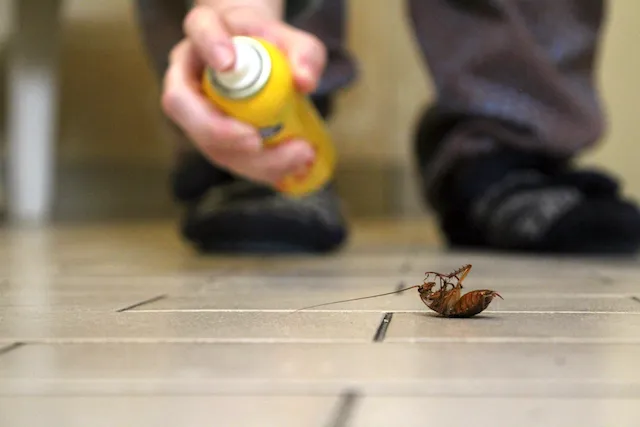When you first spot an ant trail on the kitchen counter or hear scratching noises behind the walls, it’s tempting to head straight to the hardware store or search online for a quick DIY pest control fix. After all, those traps, sprays, and homemade concoctions promise fast results at a fraction of the cost of a professional visit.
But how effective are DIY pest control methods, really? And when does doing it yourself become more risky than it’s worth?
Let’s take a closer look at the pros and cons of DIY pest control—and when it’s time to call in the professionals.
The Appeal of DIY Pest Control
There’s a good reason people reach for over-the-counter solutions when pests show up. Some of the main advantages of DIY methods include:
1. Cost Savings
Buying a can of insect spray or a few traps is much cheaper upfront than hiring a pest control service.
2. Convenience
You can take action immediately, without waiting for an appointment.
3. A Sense of Control
It feels good to handle a problem on your own, especially when it seems minor or contained.
For small, occasional pest issues—like a few ants, a single mouse, or a wasp nest in the backyard—DIY solutions can sometimes do the trick. But the truth is, many infestations are more complex than they appear.
The Limitations (and Risks) of DIY Pest Control
1. DIY Methods Often Address the Symptoms—Not the Source
Spraying a line of ants might eliminate the visible problem, but it doesn’t stop the colony from sending more. Killing a few roaches won’t solve an infestation hidden behind your walls.
Pests need food, water, and shelter. Unless you eliminate the source, they’ll keep coming back.
2. Over-the-Counter Products Aren’t Always Effective
Professional-grade pesticides are stronger, more targeted, and require special licensing to use. The consumer versions you buy in stores are often diluted for safety—meaning they may take longer or be less effective.
In some cases, pests can even develop resistance to common treatments, especially with frequent or improper use.
3. Misuse Can Be Dangerous to People and Pets
Many store-bought pest control products contain chemicals that can be harmful if inhaled, ingested, or applied incorrectly. Children and pets are especially vulnerable.
Mixing products or using too much can create toxic environments, while placing traps or baits in the wrong areas can lead to accidental exposure.
4. Hidden Infestations Go Undetected
You may eliminate what you can see, but miss what you can’t. Bed bugs, termites, carpenter ants, and rodents often live behind walls, under floors, or in attics—and continue to reproduce undisturbed while you believe the problem is under control.
5. Improper Treatment Can Make the Problem Worse
Using the wrong pesticide or method for the pest you’re targeting can cause pests to scatter or move deeper into your home. For example, spraying for bed bugs instead of using heat treatments or specialized plans often just drives them into new areas.
When DIY Might Be Enough
There are some situations where DIY methods are appropriate:
- A small trail of sugar ants in the kitchen
- A single wasp nest hanging from a fence or tree (only if you’re not allergic)
- A mild fly issue near a garbage bin
- Occasional spiders or silverfish
In these cases, basic store-bought products and a few preventive measures (like sealing food and fixing leaks) can be enough to stop the problem.
However, if you’ve tried DIY methods and the problem keeps returning—or you’re unsure what you’re dealing with—it’s time to escalate.
When to Call a Professional
Here are some clear signs that DIY pest control isn’t enough:
- Persistent pest sightings, even after treatment
- Strange odors, noises, or droppings in walls or hidden areas
- Signs of property damage (chewed wires, wood shavings, structural issues)
- Discovery of nests, tunnels, or burrows
- Any sign of termites, bed bugs, or cockroach infestations
- You’re dealing with multiple types of pests at once
Professional pest control companies bring more than just stronger products. They offer:
- Accurate pest identification
- Thorough inspections of your entire property
- Customized treatment plans based on the specific species and environment
- Follow-up visits to ensure the infestation is truly eliminated
- Prevention advice to stop future issues
Think Long-Term, Not Just Quick Fix
While DIY might feel like the easier choice, pest control is one area where long-term thinking pays off. Treating the surface of a problem again and again can cost more in the long run—not just in money, but in stress, health risks, and potential property damage.
A professional may cost more upfront, but they’ll likely save you time, money, and hassle by dealing with the problem completely and correctly the first time.
Final Thoughts
DIY pest control can be helpful in small doses—but for anything beyond a minor issue, it’s often more effective and safer to rely on the experts. Pests can be persistent, adaptable, and dangerous when left unchecked. The longer they stay, the more damage they can cause.
When in doubt, don’t guess. Get a professional assessment and make sure your home stays safe, healthy, and pest-free. We recommend Positive Pest Management.

